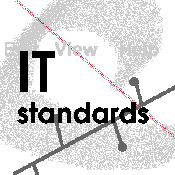
TCP/IP Network Standard
Transmission Control Protocol(TCP) and Internet Protocol(IP) are two of the best known members of the Internet protocol suite, a suite of network communication protocols developed by Stanford University to facilitate heterogenous connectivity. The Internet protocol suite provides the protocols that enable all of the networks of the Internet to communicate. Every computer on the Internet supports TCP/IP.
The protocols in the TCP/IP suite are layered protocols. Layered protocol suites separate duties between individual protocols in the group. IP is the heart of the Internet protocol suite. IP addresses are globally unique, 32-bit numbers assigned by the Network Information Center. Globally unique addresses permit IP networks anywhere in the world to communicate with each other. Internet routers use these IP addresses to deliver IP packets to their destination. TCP is a connection-oriented transport protocol that sends data as an unstructured stream of bytes. TCP provides two services that IP is missing: guaranteed delivery and serialization of data.
Resource Links
- RFC 791: The Internet Protocol
- RFC 793: Transmission Control Protocol RFC
- A More Complete Introduction to TCP/IP
- Cisco TCP/IP Brochure
- Internet Protocol Page
- The Internet Society
- IPOver ATM
- IPng(IP Next Generation)
- SLIP (Serial Line IP)
- Frequently Asked Questions
- comp.protocols.tcp-ip
- comp.protocols.tcp-ip.domains
- vmsnet.networks.tcp-ip.misc
- vmsnet.networks.tcp-ip.multinet
- vmsnet.networks.tcp-ip.tcpware
- vmsnet.networks.tcp-ip.ucx
- vmsnet.networks.tcp-ip.wintcp
This document prepared by John Viaropulos(jvist1+@pitt.edu)